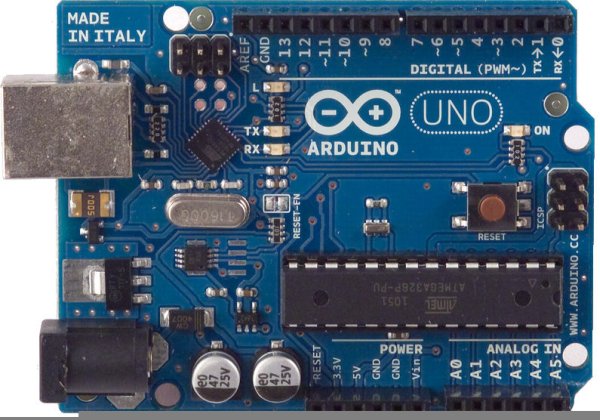Summary of Arduino String Appending Operators Code
This article explains how to append different data types to Arduino Strings using the += operator and the concat() method. Both methods function similarly and are useful for building longer strings from various data objects. The provided example demonstrates appending strings, characters, integers, and sensor readings in a serial communication context. There is no specific circuit required, only an Arduino connected via USB to a computer.
Parts used in the Arduino String Appending Operators Code:
- Arduino Board
- USB cable (for connection to computer)
Just as you can concatenate Strings with other data objects using the StringAdditionOperator, you can also use the += operator and the cconcat() method to append things to Strings. The += operator and the concat() method work the same way, it’s just a matter of which style you prefer. The two examples below illustrate both, and result in the same String:
String stringOne = “A long integer: “;
// using += to add a long variable to a string:
stringOne += 123456789;
or
String stringOne = “A long integer: “;
// using concat() to add a long variable to a string:
stringTwo.concat(123456789);
In both cases, stringOne equals “A long integer: 123456789”. Like the + operator, these operators are handy for assembling longer strings from a combination of data objects.
Circuit
There is no circuit for this example, though your Arduino must be connected to your computer via USB.
image developed using Fritzing. For more circuit examples, see the Fritzing project page
Appending to Strings using the += operator and concat()Examples of how to append different data types to strings
created 27 July 2010
modified 2 Apr 2012
by Tom Igoe
http://arduino.cc/en/Tutorial/StringAppendOperator
This example code is in the public domain.
*/
String stringOne, stringTwo;
void setup() {
// Open serial communications and wait for port to open:
Serial.begin(9600);
while (!Serial) {
; // wait for serial port to connect. Needed for Leonardo only
}
stringOne = String(“Sensor “);
stringTwo = String(“value”);
// send an intro:
Serial.println(“\n\nAppending to a string:”);
Serial.println();
}
void loop() {
Serial.println(stringOne); // prints “Sensor “
// adding a string to a string:
stringOne += stringTwo;
Serial.println(stringOne); // prints “Sensor value”
// adding a constant string to a string:
stringOne += ” for input “;
Serial.println(stringOne); // prints “Sensor value for input”
// adding a constant character to a string:
stringOne += ‘A’;
Serial.println(stringOne); // prints “Sensor value for input A”
// adding a constant integer to a string:
stringOne += 0;
Serial.println(stringOne); // prints “Sensor value for input A0”
// adding a constant string to a string:
stringOne += “: “;
Serial.println(stringOne); // prints “Sensor value for input”
// adding a variable integer to a string:
stringOne += analogRead(A0);
Serial.println(stringOne); // prints “Sensor value for input A0: 456” or whatever analogRead(A0) is
Serial.println(“\n\nchanging the Strings’ values”);
stringOne = “A long integer: “;
stringTwo = “The millis(): “;
// adding a constant long integer to a string:
stringOne += 123456789;
Serial.println(stringOne); // prints “A long integer: 123456789”
// using concat() to add a long variable to a string:
stringTwo.concat(millis());
Serial.println(stringTwo); // prints “The millis(): 43534” or whatever the value of the millis() is
// do nothing while true:
while(true);
}
Hardware Required:
- Arduino Board
For more detail: Arduino String Appending Operators Code

